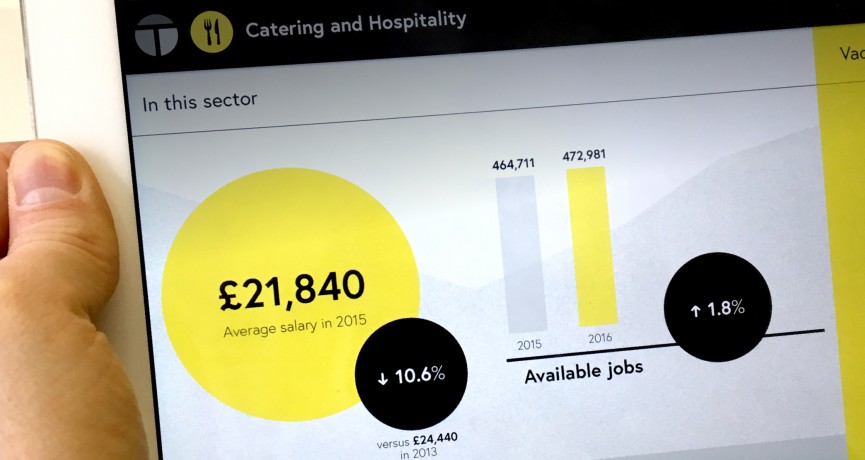Improve your online sales
We’ve been involved in developing and promoting a number of online, education-based products in the past few years. We’ve experienced the ups, run into brick walls and over time have gained an in-depth understanding into not just how to promote what it is you’re selling, but also how to establish a communication, build a relationship with your customer, and keep that relationship alive.
Our top tips
1. Give the customer something of value, for free.
If you’re selling a product or piece of software, chances are that it’s going to cost some money. So you need to get your potential customers initially engaged and interested without asking them to commit to anything, and without them getting out their credit card. A great way to do this is to give them a little taster, for free.
Offering a Free Trial of your product is valuable, however this generally isn’t an instant hit, as it requires a commitment on your customer’s part. This could be as little as asking for an email address, however as soon as you ask for a customer’s details an element of doubt can creep in, like “are they going to spam my email address?” So what you really want is to offer an instant hit which requires nothing from your customer.
As part of our work on the Global Investor Simulations website we implemented a 'Free Trial' feature. This gives people direct access to the simulation and lets them play a shortened, 5 minute version of the game.
They don't have to give an email address or credit card details - just immediate access to the simulation.
What this ensures is that people are instantly engaged and immersed in the resource. They get to play for real and experience the simulation in a way that could not be done from screenshots or a promo video. At the end of the trial, people are then directed to a page that offers ways to buy, or sign up for a 7 day trial.
2. Establish your credibility
Establishing the credibility of your organisation and your product is vital in ensuring customers are comfortable purchasing from you.
Customer testimonials are a great way to get across that your product works well. In both text and video format, customers love to hear that the product’s great from other people like themselves. It’s believable and shows that other people have taken that ‘leap’.
Highlighting the fact that other people are using your product also confirms that it’s legitimate and has a value, and if they can see that their peers are using it then maybe they should to!
Dynamic feeds
For the Global Investor website we also introduced a live, dynamic feed directly from the game into the website. This shows a live leader-board of scores as well as Schools that have recently played.
The inclusion of this feature reinforces the credibility of the product as it shows Schools have bought it, it shows they’re using it now, and it tells potential customers that the product is alive and real!
Credibility can also come from impartial industry experts. A quote from a recognised and respected figure in your industry can carry more weight that a quote from the customer ‘J Smith’. Try approaching a number of respected figures and give them a free copy of your product in return for a quote or some feedback. And you never know, if they love your product you may be able to get them on board to help with some PR for your product!
3. Show the customer it’s for them
So you’ve done all the ground work and managed to get potential customers onto your website. Whilst you know you’ve got a great product, you need to make sure you present it in a way that tells these potential customers it’s for them.
Work out who your main target customer is and focus your website’s homepage on talking to these customers. The easiest way to do this is by name checking them.
Our website for Strode College has eight main entry points at the top of the homepage focusing on the core areas where they can address their specific audiences - these include:
- I'm leaving school
- I want to do an HE course
- I'm thinking about an apprenticeship
- I'm looking for an adult course
What this ensures is that the user know the site is for them. They've found their way into the site with the knowledge that they will find information relating to their needs.
4. Don’t do the hard sell – always provide alternate options
Whilst it’s tempting to push everyone to your Checkout or Buy page to make them part with their money, customers like to buy on their own terms and at their own pace.
Therefore, make sure your Buy page caters for those who don’t want to buy right at that moment. Offer them an alternative option to keep them on your website. This could be some customer testimonials, a product demonstration video, some reasons to buy, or links to your contact page or more information about the product.
Don’t think by sending them away from your buy page you’re losing a sale – they would have left on their own accord anyway. This way you’re providing good customer service by letting them decide how and when to buy, but still keeping them on your website.
Furthermore, remember you are selling your product to education institutions and organisations. This means they may not be able to make a purchase with a credit card. Make sure you provide alternate payment options such as a fax order form (yes, schools still use these!) or a payment upon invoice option.
5. Create a channel for communicating with your customers
Once your customer has signed up for a free trial it’s very easy to just sit there with your fingers crossed and just hope for the best! However, to convert this free trial into a sale you must create a channel to communicate with your customer.
Setting up an automated email suite is a great way to ensure your customers feel like they are being cared for and you’re providing a personal service. For instance, imagine you offer a 7-day free trial of your product. You could set up the following system:
- When a customer signs up they get a welcome email
- After 3 days they get another email asking how they’re getting on and if you can be of any assistance
- On day 6 they get another email saying the free trial expires tomorrow and offers further help and assistance.
- And then a week after their free trial has ended you could prompt with a little reminder email asking how they got on
Furthermore, when the customer tries to log in again after their free trial has expired, don’t just shut them out and tell them they’ve expired - offer some great customer service. Inform them that their free trial has expired and provide them with some options, such as:
- Let them buy the product
- Allow them to extend their free trial if they give some feedback
- Or, let them delete their trial account
No-one wants to lose a customer, but providing an option for them to delete their account will earn you respect and show that you also respect your customer.
In reality, these 5 tips don’t just apply to education-based products. Whilst our own experience is gained from the education sector, these tips can easily transfer to other sectors selling online products and software.
Published 19th November 2015


